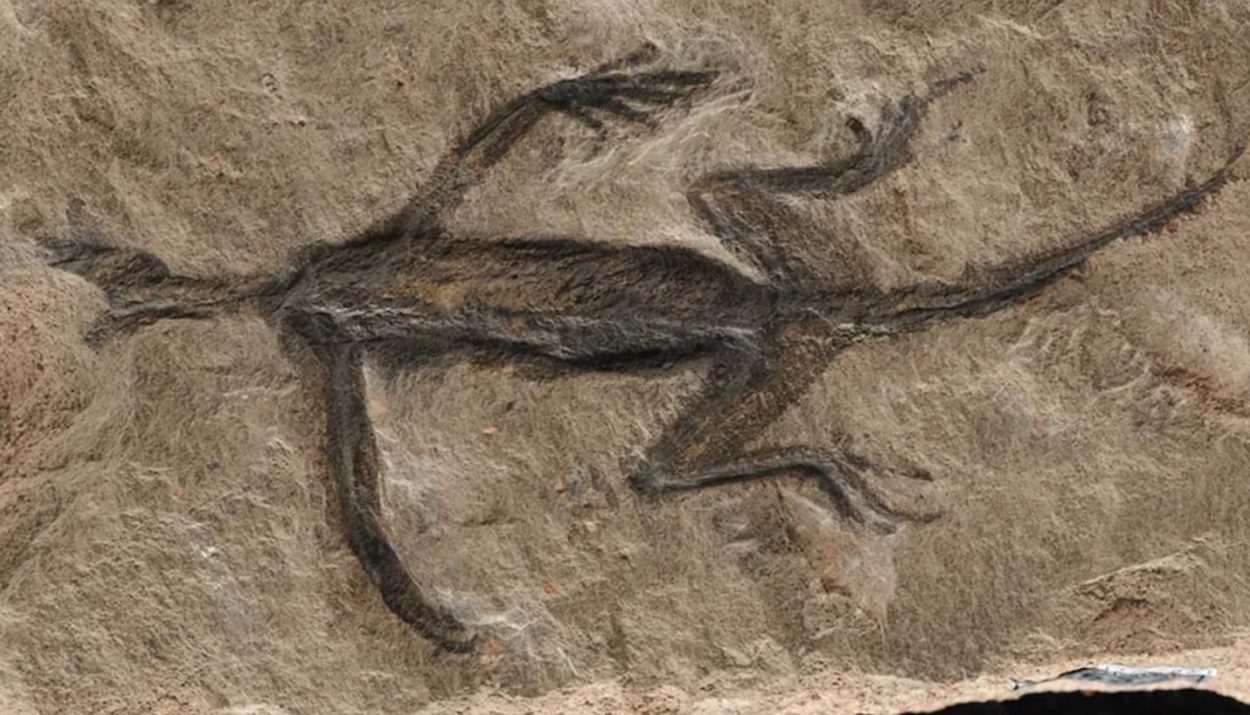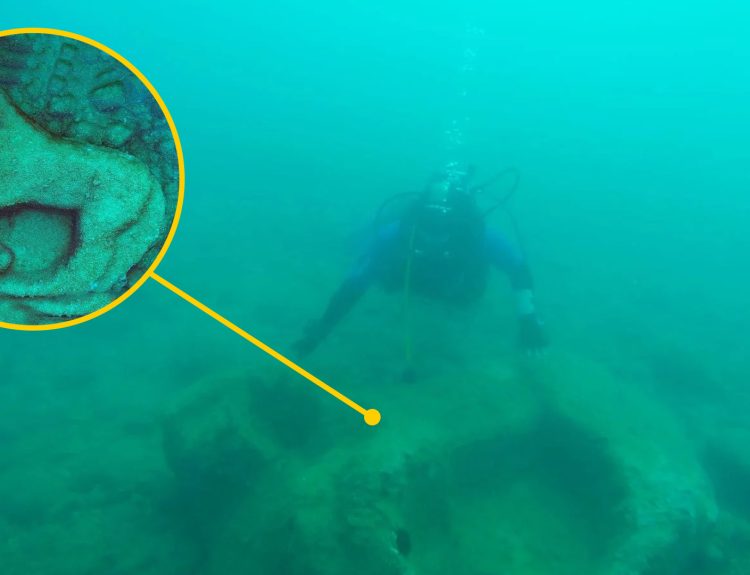In 1931, a strange fossil of a long-extinct animal was discovered in the Italian Alps. It was a remarkable discovery because the little lizard, called Tridentinosaurus antiquus, was so old, yet so exceptionally preserved.
New technology has re-opened the study of this peculiar fossil and allowed scientists to take a different look at this mysterious find that has puzzled the paleontology world for more than nine decades. While the new research has finally given scientists the answer to the mystery, it also created more questions. It turns out, this unusual fossil was not what it seemed.
A Pre-Dinosaur Lizard
The fossil of the Tridentinosaurus antiquus, which dated to 280 million years ago, belongs to a lizard that lived long before the age of the dinosaur. Its age puts it in the Permian period, the last period of the Paleozoic Era. The Permian period extended from 299 to 251 million years ago.

The end of the Permian period, as well as the entire Paleozoic Era, is distinguished by the largest mass extinction incident in Earth’s history. Climate changes and warming temperatures caused about 96-percent of all marine animals to die in a mass extinction that scientists call the “Great Dying.”
The Oldest Lizard Fossil Ever Found?
The 280-million-year-old Tridentinosaurus antiquus fossil has long been considered one of the oldest lizard fossils ever unearthed. What made this fossil so incredible was that the animal’s body was completely fossilized before the soft tissue had a chance to decompose. That is a rarity in the paleontology world.
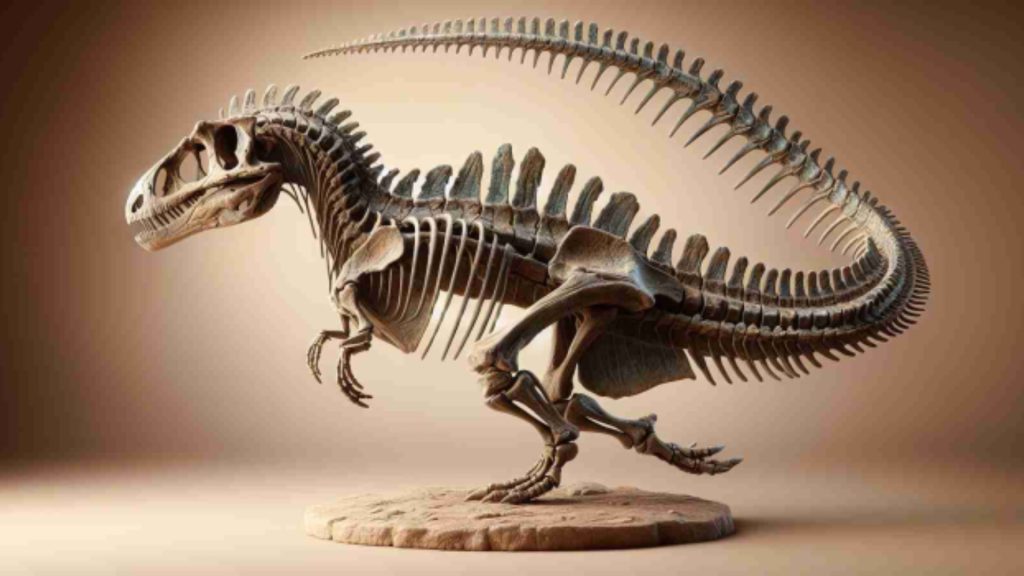
In fact, the Tridentinosaurus antiquus has been referred to as a “celebrity fossil” because it was so unique. The fossil shows an imprint of the animal’s body, including its soft tissue.
A Baffling and Exciting Fossil
For decades, scientists have tried to explain how the lizard could have become fossilized before its soft tissue decayed. They batted around several theories to suggest scenarios in which this could have occurred.
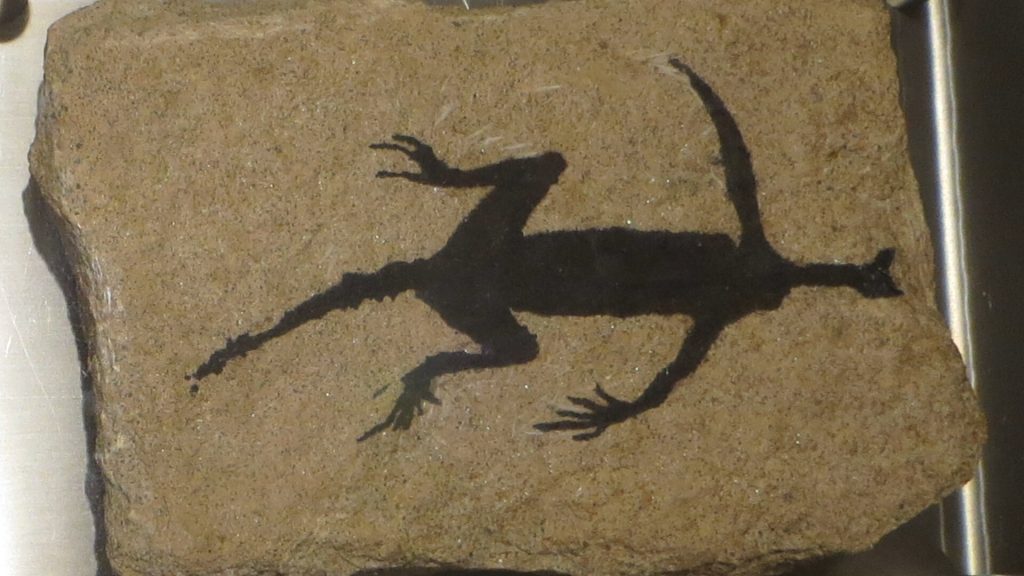
One of the reasons why this fossil was shrouded in mystery is that no other fossil like it has ever been discovered. Whatever circumstances led to the creation of the fossil, it must have been a one-time event.
Taking a Closer Look at the Bewildering Fossil
The Tridentinosaurus antiquus fossil has been extensively studied, however it had not been analyzed. No one had taken a deeper look at the skin on the fossil, in part because the technology didn’t exist to do this. For decades, scientists were forced to take the fossil at face value until the technology caught up.

Valentina Rossi, a paleobiologist from University College Cork, led a search team that conducted a new, thorough analysis of the fossil. “At fist glance, I must say I thought the fossil was looking a bit … peculiar,” Rossi noted.
A High-Tech Approach
Rossi and her team used several state-of-the-art devices and equipment when conducting their study. Their first step, a UV scan, showed that there was a coating over the fossil, but she added that this is not unusual. In the past, fossils were often covered with a protective film to keep them preserved.
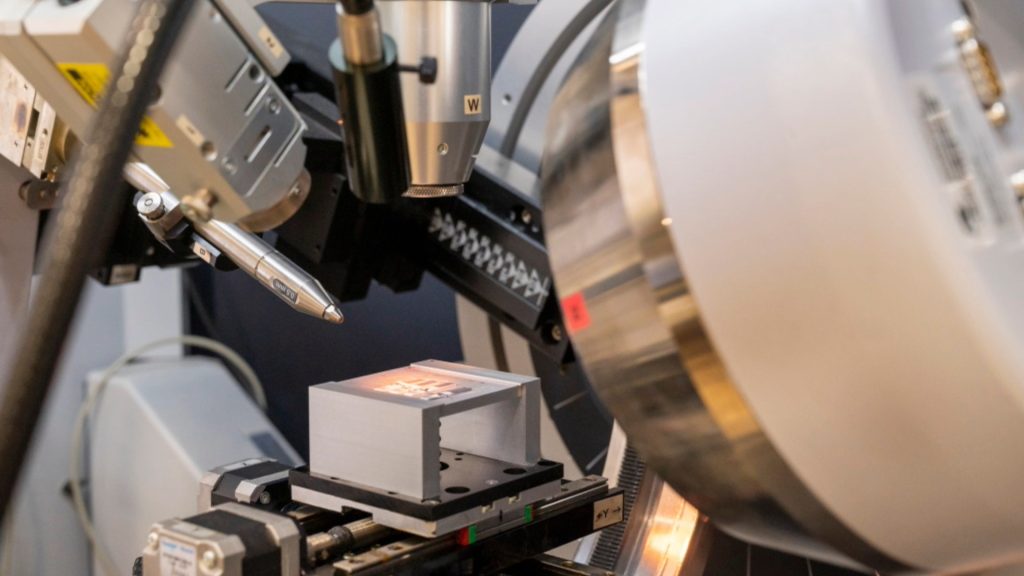
Next, the research team used a micro-X-ray diffraction, a scanning electron microscopy coupled with energy dispersive spectroscopy, Raman spectroscopy, and an Attenuated total reflectance-Fourier transformed infrared spectroscopy.
Carbonized Skin?
For decades, it was assumed that the black color of the fossil was the lizard’s carbonized skin. The equipment Rossi and her team used to analyze the fossil was meant to take a closer look at the texture of the skin and to glean information about the animal’s anatomy and internal organs.

Rossi wasn’t alone in thinking that the Tridentinosaurus antiquus fossil was bizarre. “Other colleagues of mine told me they had the same reaction. But fossils are always a bit weird, so I carried on my research,” she said. But what she found was truly unexpected.
“Nothing Made Sense“
Rossi continued, “After analyzing microsamples of what looked like the body outline – so, the skin – I realized that nothing made sense.” The scientific analysis of black outline on the Tridentinosaurus antiquus fossil revealed that it wasn’t organic in nature. It could not have been formed from the lizard’s skin.
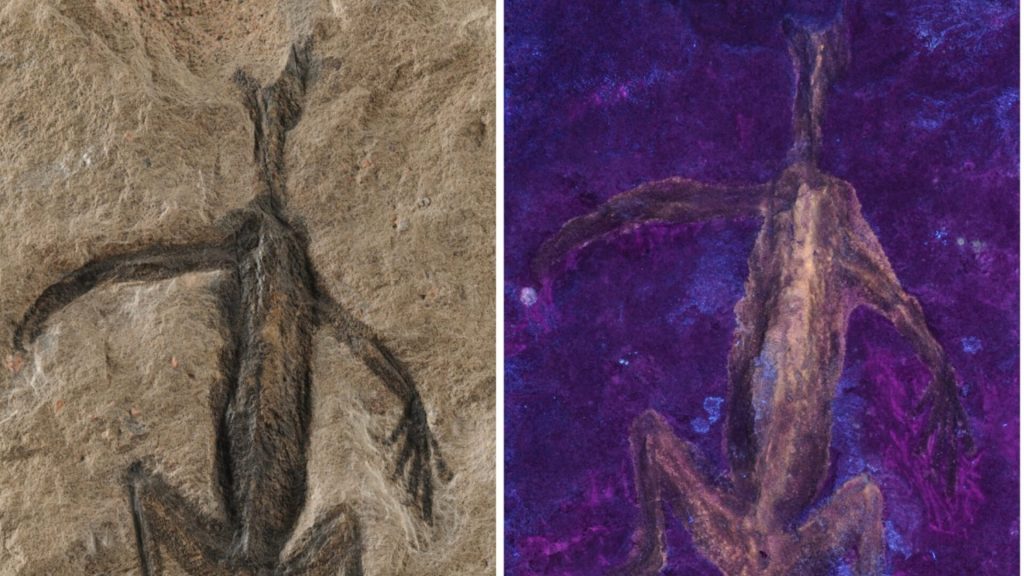
“The molecular analysis finalized the results that what we had was not carbonized soft tissue, but black paint,” she explained. Someone, years ago, had painted the fossil to give it the appearance of having skin and soft tissue.
An Old Pigment
The research team looked at a number of different substances and compared their molecular makeup to what they found on the Tridentinosaurus antiquus fossil. They learned that the black paint used on the fossil was consistent with bone-black pigment that was used in paintings from the 1600s.

Artists of the past couldn’t simply run to the nearest craft store to pick up the paint they needed. Instead, they had to make their own. Most of the time, they followed proven “recipes” for mixing paints.
Bone-Black Paint
Bone-black paint was made using linseed oil and lead, mixed with carbon. The Attenuated total reflectance-Fourier transformed infrared spectroscopy of historic paintings show that the paint contained calcium phosphate hydrate, monetite, and crystalline hydroxyapatite.

The same was true of the paint used on the fossil. An analysis of the paint used on the Tridentinosaurus antiquus fossil showed that is was similar to the composition of paint commonly used from the 1600s to 1800s.
A Shocking Revelation
The announcement that the Tridentinosaurus antiquus fossil was a painted image sent shock waves through the paleontology community. Rossi stated, “I think I can honestly say we were all a bit in shock and sad” when the results of the analysis came in.
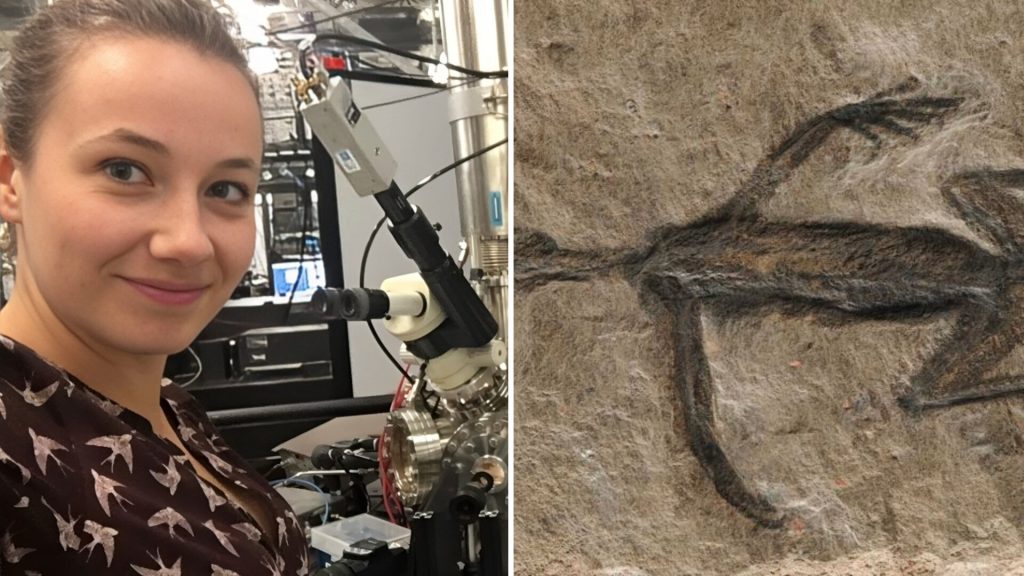
She continued, “But we realized that this is a glimpse into the history of paleontology. Today, we can count on powerful techniques that allow us to look at fossils at the molecular level, and this was not possible even ten years ago.”
So, Is the Fossil a Fake?
Absolutely not! Even though the skin was painted on, there was a real fossil underneath. The animal’s rear legs bones are clear in the 3D imaging of the fossil. According to Rossi, the femurs in particular are well defined.
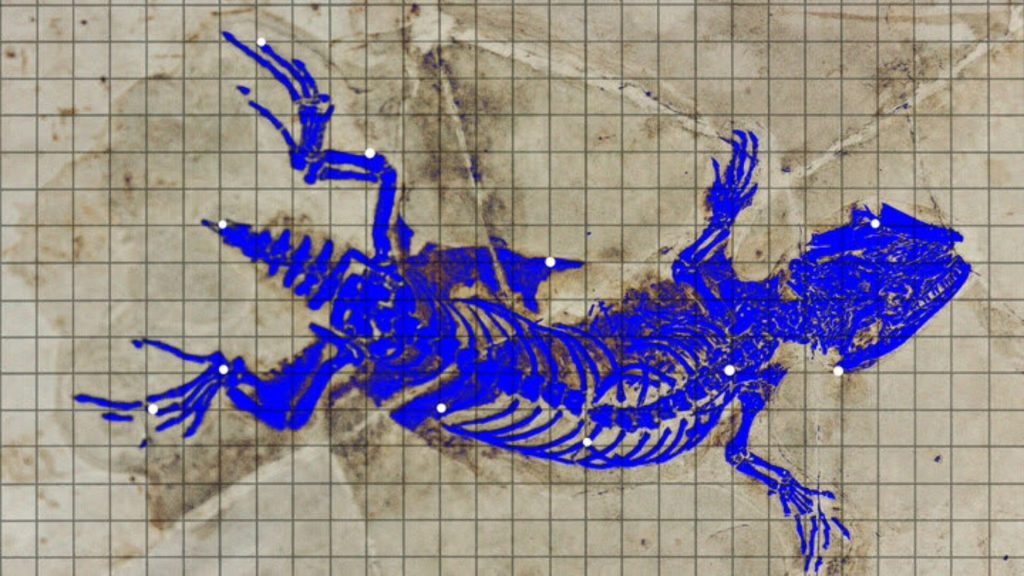
The Tridentinosaurus antiquus fossil is as old as suspected, which makes it still a worthwhile object to study. In fact, now that the paint has been identified, there is more work to be done on the fossil.
More Work to Be Done
Rossi explained that scientists can take a fresh approach to studying the Tridentinosaurus antiquus fossil. It can be compared to other fossil discoveries dating back to the same time period.
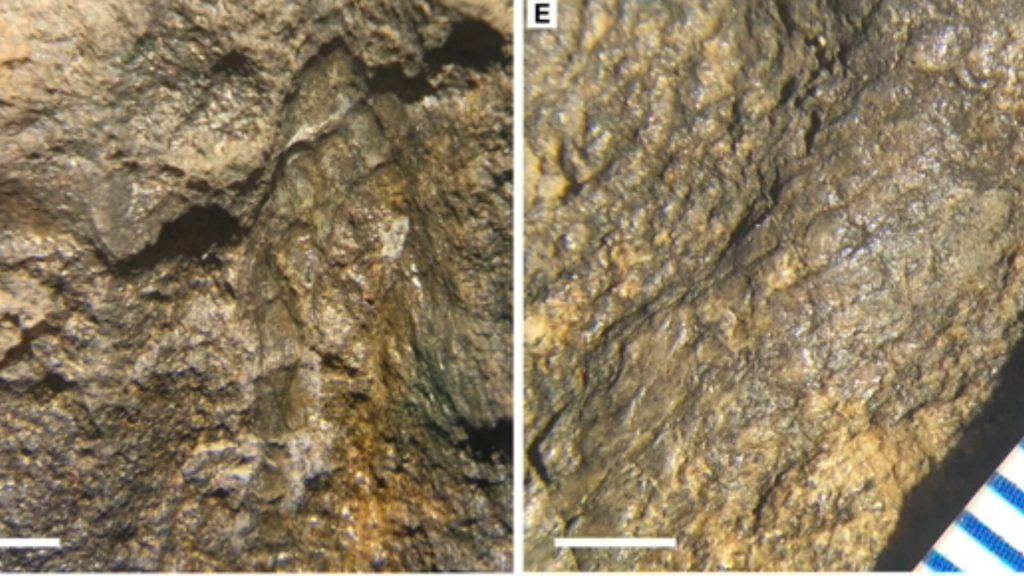
She noted that previous fossil finds were declared to be too dissimilar to the Tridentinosaurus antiquus fossil in the past. Now, a fresh comparison can take place. This may be the key to understanding more about the real Tridentinosaurus.
Why Was the Fossil Painted in the First Place?
The answer to this question will never be known, however scientists can speculate. One clue can be found by looking at the development of paleontology as a scientific discipline.

Fossil collecting was not uncommon in the past, but it wasn’t until the mid-1700s – during the Age of Enlightenment – when people took a scientific approach to the study of fossils.
Was the Fossil a Decorative Piece?
Prior to this time, fossils were nothing more than quirky oddities. Most people kept their fossil finds for themselves or tried to sell them to collectors. Even if they were given to museums, it was not unheard of for fossil discoveries to be displayed wearing top hats and mustaches.
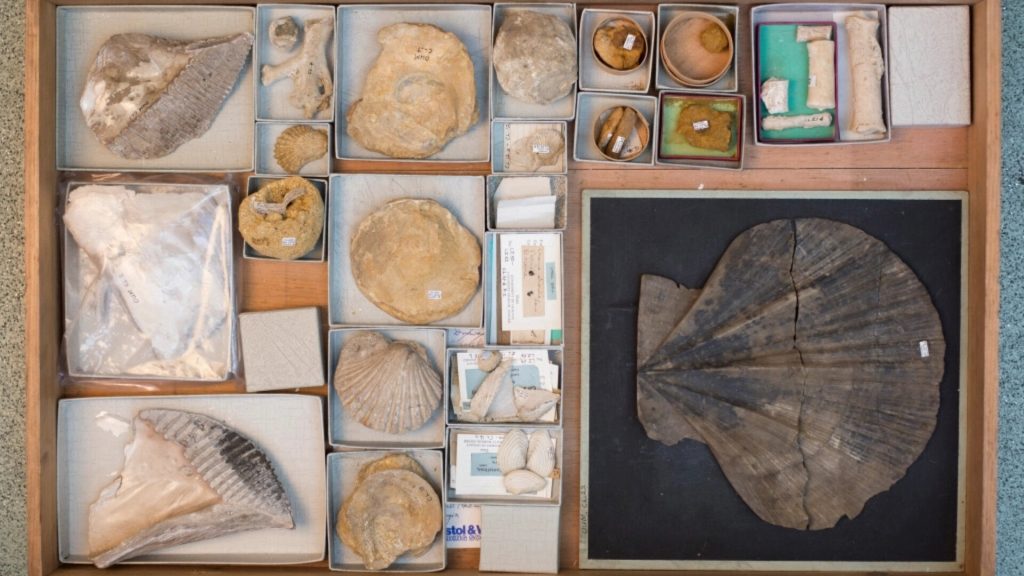
Perhaps the person who first found the Tridentinosaurus antiquus fossil didn’t view it as a scientific find worth preserving, but as an incomplete canvas … something to be enhanced with a bit of paint.

